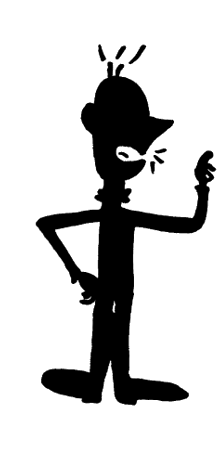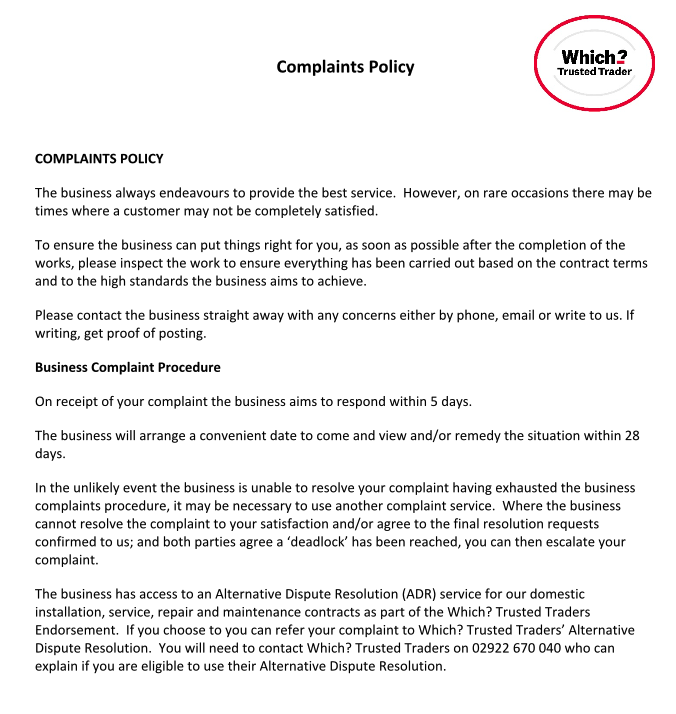![]() Call Us on 08081694454
Call Us on 08081694454
Render Cleaning
MOSS MONSTER has an enemy – Fungi, mould, mildew and algae. These insidious little monsters grow larger and larger if not kept at bay. We at MOSS MONSTER desire to SMASH these organic growths and kill their spores off.
Simple and careful applications of mixes of bio-degradable chemical along with gentle water spray will accomplish this very well.
We can clean K-Rend, other types of coloured render, and a variety of render surfaces using softwashing techniques, rather than traditional pressure washing. This can be safer for the substrate in avoiding accidental damage and inhibits for a longer period of time the re-growth of black, red and other types of algae.
Render Cleaning Services- Cleaning Render With MOSS MONSTER LTD
Render is often used on building. Why?
Reason 1 – Aesthetics
The number one reason historically for rendering a property is to improve the look. Adding a render coat can really brighten up a shabby looking wall, and it gives the opportunity to give the whole house a facelift.
Some properties can have a real mish-mash of brick types, unattractive wear from years of exposure, or just look tired and unattractive. Adding a layer of render gives you the opportunity to completely change the look of the property – giving you a smooth uniform finish. Back in the 70’s that seemed to mean pebbledash, but nowadays the standard is usually a white smooth render.


Reason 2 – Penetrating Damp
Another reason people choose to render their homes is to deal with water ingress and penetrating damp issues. Some forms of brick, especially in exposed areas, can be liable to damp if exposed to the elements over a prolonged period of time. Water gets through the solid brick wall and in to the house, causing a host of problems in the home. Adding a layer of render to the outside wall of the home blocks the path of water in to the property and prevents this form of damp from occurring. Of course, this is only really the case on older solid brick properties. If you have a cavity wall, you shouldn’t be getting penetrating damp like this.
Reason 3 – Improve thermal performance
Rendering your property will provide a slight insulating effect of its own, but if you are rendering, it is a great time to consider full external insulation.

Some types of render are:
Acrylic – This is the cheapest type of render and can provide really vibrant colours. The drawback is that it is not breathable – and this can be an issue for some properties.
Mineral – This type of render is very tough wearing, and is somewhat breathable. It is the mid-price option and is usually suitable for most instances.
Silicone Silicate – This type of render is the most expensive, but is lots of beneficial properties – it is self-cleaning and breathable. One downside is that it can only really be installed in the summer months as it needs milder temperatures to be able to dry.
Finished coloured renders like K-Rend, Moncouche and Weber suffer with algae, bacteria and mildew staining. Weather and pollution can also lead to staining and discolouration. At MOSS MONSTER LTD we use our low pressure unit to gently clean render surfaces. If render is subjected to a high pressure wash it can cause long term damage, while softwashing will not harm the buildings substrate. A Softwash will will return any render surface cleaned to its natural state, looking freshly painted, thus increasing the buildings kerb appeal and value. We restore these surfaces, cleaning render, to as new conditions safely from the ground in most cases. In fact we can restore any rendered surface including painted render and all pebble & spa dashed finishes.
The term “algae” actually encompasses an incredibly large and genetically diverse group of organisms. Genome sequencing has found algae in four different kingdoms: Plantae, Chromista, Protista, and Bacteria. Algae can be unicellular or as large as a tree like the giant sea kelp. Algae are typically photosynthetic, meaning they need carbon dioxide and sunlight to grow – just like plants.
Organic growth on external surfaces is typically naturally occurring micro-organisms of fungi or algae which left unchecked can cause blemishes or staining of painted or unpainted surfaces. The resultant blemishes are the result of site and environmental conditions that support or “feed” their growth. The key to reducing the risk of contamination is managing the conditions that otherwise fuels growth.
MOULD OR ALGAE?
The distinction becomes important when we consider control measures.
Algae are plants that derive their energy from chloroplast requiring light energy from the sun.
Mould is actually a form of Fungi which thrive in conditions of low or no light providing there is
adequate moisture and a nutrient source (eg any organic matter such as leaves, wood, dirt etc). Fungi can be spread by airborne spores that are present in surrounding environments.
Treatment of either Fungi (mould) or Algae is similar typically involving cleaning and sterilising.
Prevention of growth / re-growth requires maintenance of the surface and environment to eliminate one or more of the conditions required for growth.


PAINTED SURFACES
Fungi and Algae can exist on virtually any surface (even glass) provided the right conditions for growth are met.
Visible growth on painted surfaces is typically caused by contaminants present together with the presence of high enough levels of moisture to support growth.
Whilst paints can be “fortified” with agents restricting growth, protection relies on reaching the growth and the active agent remaining “active”.
Agents in paints become ineffective where they cannot “touch” the growth source (eg where growth emanates from deposits on the film). Additionally the active agents are “consumed” in the process such that protection is time limited where conditions support ongoing growth.
KEEPING SURFACES FREE OF MOULD/ALGAE
Mould and Algae are essential parts of the earths’ biomass & natural growth will occur where favourable conditions exist. Typically algae are more prevalent on roofing and horizontal surfaces receiving maximum light and moisture. Unlike Fungi, Algae requires light to grow. Fungi (mould) do not require light but thrive in damp environments. In all cases maintenance of surfaces and surrounding environments is required to restrict growth / regrowth involving:
- Regular cleaning of surfaces to remove dirt and airborne deposits
- Restriction of nutrient sources such as leaves, plant matter, waste
- Specific attention to areas of high moisture and/or poor ventilation creating ideal growth conditions.


BEST PRACTICE TO MAINTAIN YOUR EXTERIOR FACADE.
Organic growth on external surfaces is a sign that the prevailing conditions that exist (eg. high surface or substrate moisture levels, organic nutrient availability, airborne mould spores) are conducive to organic growth. Once initiated, natural growth will develop and continue until treatment is effected and one or all of the conditions are controlled. Where you see mould on a surface you need to look for potential causes – generally dirt accumulating on the surface (containing contaminants or the “food source”) and excess moisture (potentially poor ventilation, drainage, leaks allowing the moisture level to stay permanently high) Overwhelmingly, the easiest condition to control is the reduction of surface contamination through regular and simple cleaning. Dirt, organic matter, airborne pollution left unchecked provides both the nutrient source and increased moisture retention.
PREVENTION IS BETTER THAN CURE!
Whether your building is cement render, brick, masonry or timber, all exterior painted surfaces will benefit greatly from an annual “spring clean”. Dependant on the site conditions and location more frequent cleaning may be required, examples include: Coastal environments continuously subjected to wind spray may collect more dirt and airborne matter and benefit from more regular cleaning. Rural locations subject to increased airborne plant / organic matter or industrial areas are at higher risk of surface contamination supporting growth. Locations with high airborne yeasts (such as near breweries or bakeries) are at increased risk. A simple but routine maintenance program of the external surface involving inspection & cleaning also provides for identification of potential issues before they develop into costly repairs.

Pay particular attention to likely water ingress points such as around windows & flashings, gutters & downpipes and drainage away from walls. Prepare a bucket of warm water mixed with a moderate amount of household detergent. Caustic-based preparations should not be used, as they may damage the coating. Hose down walls to remove loose dust and dirt. Apply the cleaning solution to wet walls with a soft bristle brush, or broom. Localised grime or ingrained dirt should be removed by cleaning with gentle scrubbing. Before the cleaned walls areas dry, hose it down thoroughly with clean water. Note: Cleaning by High Pressure Wash is generally not recommended as damage my occur where pressures are excessive. If used in conjunction with softwashing and soft brushing or brooming or for rinsing a maximum pressure of 450-psi is recommended using a wide fan jet angled at 45 degree and kept at least 20cm away from the surface. Dependant on location and environment professional cleaning and recoating every 5-7 years is recommended to maintain premium aesthetics. Warranty periods of materials (including paint) typically do not cover normal exposure weathering and aesthetics.

TREATMENT OF EXTERIOR WALLS WITH MOULD OR ALGAE
Where organic growth has initiated and spread, remedial action is required to treat the infection – Cleaning alone typically will not prevent further growth. In minor instances where growth is minimal, isolated to a specific area, and discoloration of the surface is not ingrained, spot treatment with a mild household bleach solution (5% Sodium Hypochlorite) may be practical. It should be noted that in such cases : The spot treatment may “bleach” the colour – a test area in an inconspicuous area is recommended. The treatment provides an “initial kill” but offers no residual protection – attention to the conditions supporting growth as defined is required for longer term protection. Where ingrained growth has developed and staining of the surface has occurred, Pre-Treatment and Recoating System approach is required consisting of: Pre-Cleaning, Sodium Hypochlorite Treatment and Residual Effect Sanitising of the surface Encapsulation using a Sealer Coat to restrict moisture penetration and stain migration Recoating with 2 coats of “Tropical Strength” (high Fungal / Algal protection) Topcoat.

Trying to remove these organic growths can prove problematic. Remember that high pressure washing can cause real damage, and if incorrectly removed the infection will return too soon. With our softwash treatments we apply softwash products, with steam, to both clean the building and eliminate the infection. This ensures the building looks great after cleaning, and keeps its brilliance.
The staining and discolouration of render leads many to think that full re-painting is the solution. This is expensive and completely unnecessary. Red stains on render, and green algae on render, can be cleaned entirely. When it is clean, render keeps its colour! Cleaning render is the recommended and more cost effective way to maintain K-Rend surfaces. Until recently however high pressure cleaning was the only option available. Whether using hot or cold water under high pressure, the aggressive technology blasts moisture beneath render’s surface, which means organic growths return shortly after cleaning. In many cases, high pressure cleaning has even blasted render totally off the wall!

Softwashing uses gentle products to kill the infection at root, to clean render and remove stains from render. Our low pressure tank system cleanses and replenishes render, restoring it to its natural finish and colour for years to come, without causing damage. The newly painted look of a clean render that has been softwashed typically lasts for longer than render cleaned by old fashioned methods.
Whether you are looking for a K-Rend algae clean, or other render cleaning services, we are able to help. To discuss our render cleaning services please contact MOSS MONSTER LTD today.
Advice if you choose to self-clean your render
Render offers a clean, modern, and attractive finish for your home which will last for more than 20 years if properly maintained. Although render is low maintenance, you may need to wash it down from time to time, which is why we’ve created this handy guide on how to clean coloured render and keep it looking fresh for years to come. This guide will also teach you how to remove green algae, which is a common concern for those with rendered walls.
- Watch out for vegetation
Any organic growth on the surface will make your beautifully rendered home start to look grubby and ugly. Gently remove any ivy, moss or other greenery using a brush, and then treat the entire wall with a render cleaner.
Even if there’s no sign of growth on the building, it can be a good idea to give it an occasional wash, which will kill a broad range of bacterial, fungal and algal species including green algae. This will not only keep the render looking fresh, but will slow down algae build-up before it becomes noticeable.
2. Wash it down
If you’re looking to remove stains from your render, or if it’s just looking a bit grubby, give the building a good wash using a pressure washer and a mild detergent. Take care to adjust the pressure washer to a fan setting at no more than 60 bar pressure rather than a jet action as this could damage the render. There’s no exact rule as to how often you should be washing your render — once a year or as often as necessary to keep it looking great.
Please note: Pressure washing is unsuitable for dry dash finishes.

K Rend Renders provide a low maintenance solution to external rendering on both commercial and residential properties.
To ensure a freshly rendered appearance for a prolonged period follow the 3 easy steps below:
- Where general staining occurs, use a warm power wash and suitable detergent to clean up the K Rend finish.
- Take care to adjust the pressure of the power washer to ensure that the render is not damaged during the procedure (This is not suitable for Dry Dash finishes)
- An annual coat of fungicidal wash can prevent algae from growing on weather prevailing facades, which can be prone to algae by remaining wet over long periods.
“Applying best techniques in this industry”

Limited Company Information:
Company Number: 13463041
Registered Business Office Address:
Wootton Taylor,
30 Foregate Street
Worcester
WR1 1DS
Registered in England & Wales
VAT NO. 458 0834 72

Disclaimer:
The information provided here is for general informational purposes only and should not be considered as specific professional advice.
While efforts are made to ensure the accuracy and completeness of the content, no responsibility is taken for any consequences that may arise from the personal use of this information. It is always recommended to seek our professional advice and conduct thorough research tailored to your specific situation before making any decisions. The user assumes all responsibility and risk for the use of the information provided.



